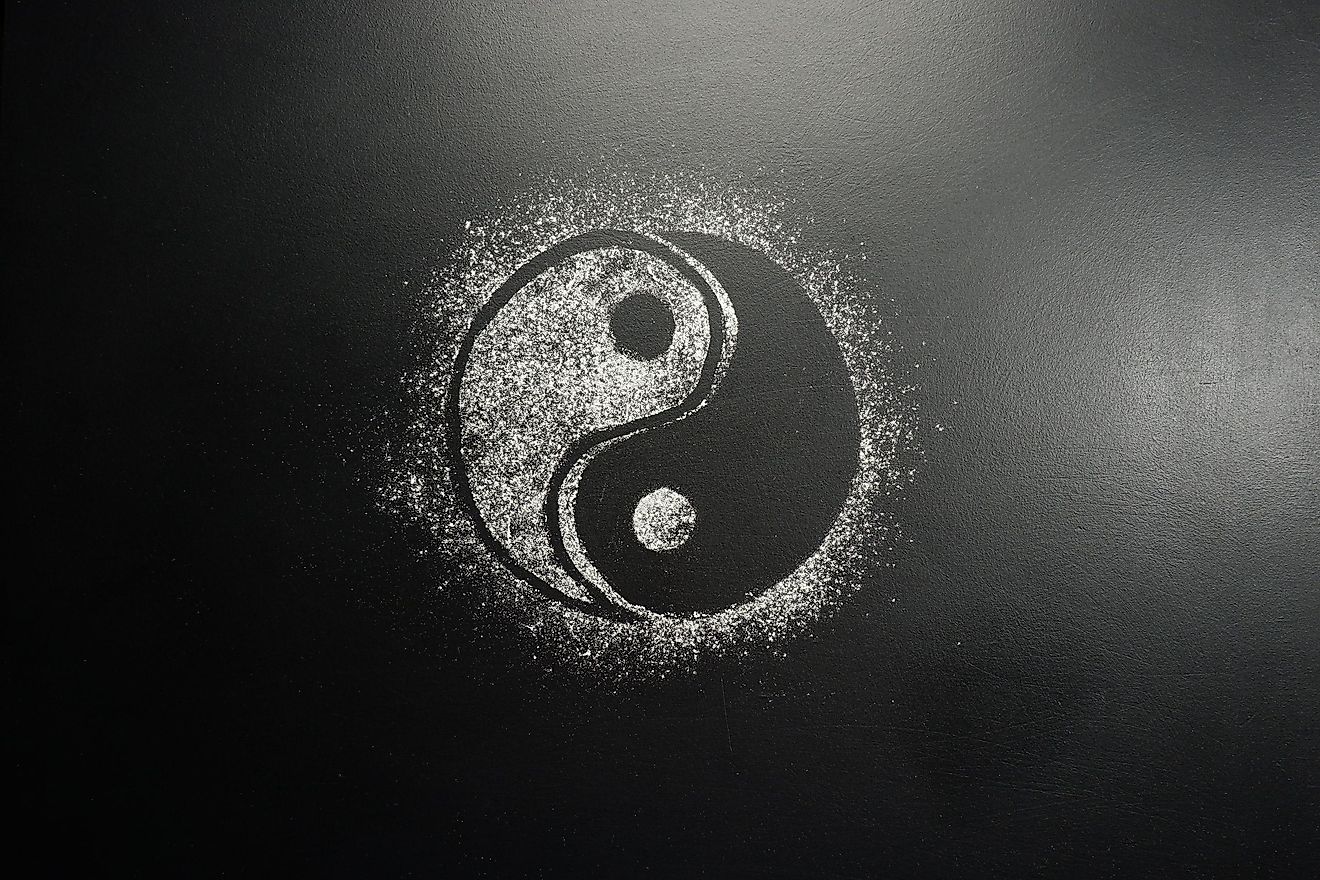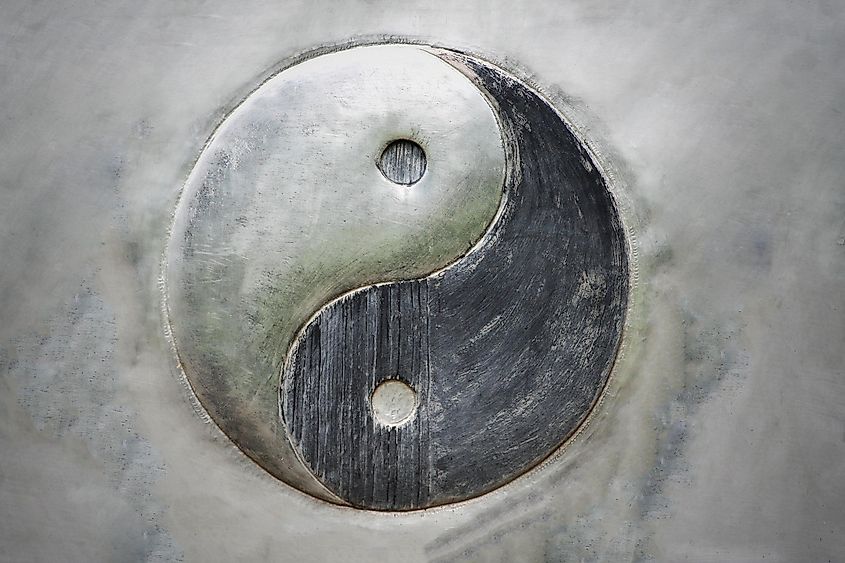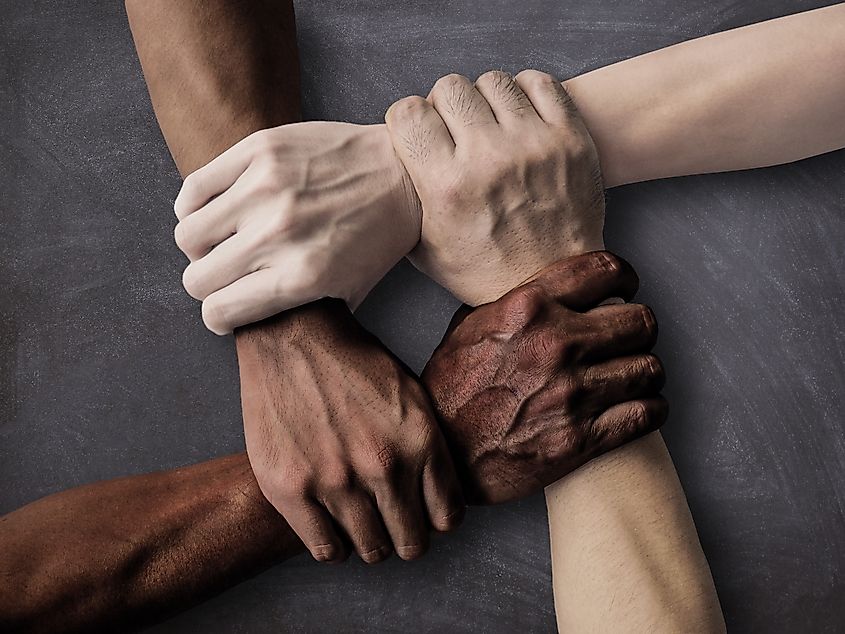What Is the Meaning of Yin and Yang?

- The Chinese philosophy of Taoism, sometimes called Daoism, began over 2000 years ago.
- Lao-Tzu is believed to be the founder of Taosim, and it is thought he and Confucius knew one another.
- Yin-Yang symbols don't have to be black and white. Many versions use opposite colors on the spectrum to demonstrate contrast.
Although today the yin-yang sign is found everywhere from jewelry to tattoos, the ubiquitous symbol has its origins in ancient Taoism, a Chinese philosophy. The earliest reference to yin-yang, which translates to dark-bright in both the Cantonese and Mandarin Chinese languages, was written in 700 BCE is found in the I Ching, or Book of Changes. The yin-yang concept represents balance and harmony and suggests that everything in nature is composed of opposite but complementary elements. These opposing forces interconnect to create chi or the binding energy force in the cosmos. Too much of either one can be destructive, and finding their balance is essential for happiness and health.
According to Chinese cosmology, the constant alternation between darkness and light equates to the cycle of life. For example, when the sun rises the moon fades, but just as the sun reaches its height, it begins to descend again and the moon rises. The same can be observed in the change of seasons as well as high and low tides. Yin-yang also exists within our interactions with each other such as giving and receiving or talking and listening.
Shape

The outline of the symbol is a circle, representing eternity and the continuous cycle of life in Chinese tradition. Within are two halves shaped like tadpoles or teardrops. One half, the yin, is black while the other half, the yang, is white. Consisting of a large end and a smaller tail-like end, the halves appear to be swirling into one another. Within each large end is a small dot of the opposite color. This represents the notion that too much of anything is unhealthy and a counterbalance is needed to bring harmony.
Yin

The yin is represented by the dark half of the symbol. There are a number of elements associated with the yin side of chi. The directions of west and north are related to yin, as are the natural conditions rainfall, night, the autumn and winter. Even numbers are believed to be aligned with yin, as are metals, the Earth, and water. Yin is believed to be a feminine energy associated with the right side of the body.
Yang

Yang is represented by the white half of the symbol. Its elements are the opposite of the yin, including the directions east and south, as well as sunlight, daytime, spring, and summer. Odd numbers, wood, air, and fire are aligned with yang, which is also associated with male energy and the left side of the body.
The Four Aspects

Along with the binary concept of light and dark, yin-yang philosophy also incorporates relationships called The Four Aspects that lead to balance and harmony. The Four Aspects are interdependence, transformation, contradictions/paradoxes, and continuous change. Interdependence means one can not exist without the other. Transformation refers to the cycle of rest and action, life and death. Contradictions and paradoxes relate to the existence of opposites. Lastly, constant change reminds us that the only thing we can predict is that things will always be altering and evolving.











